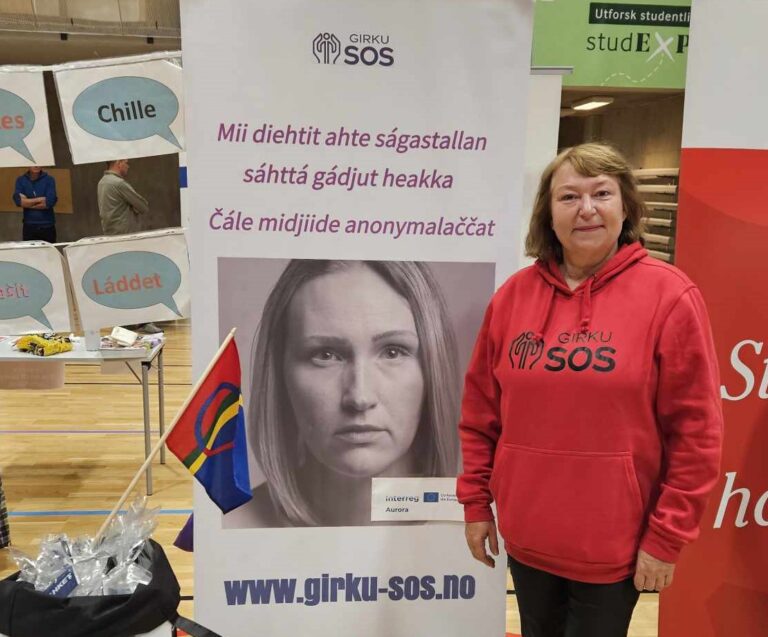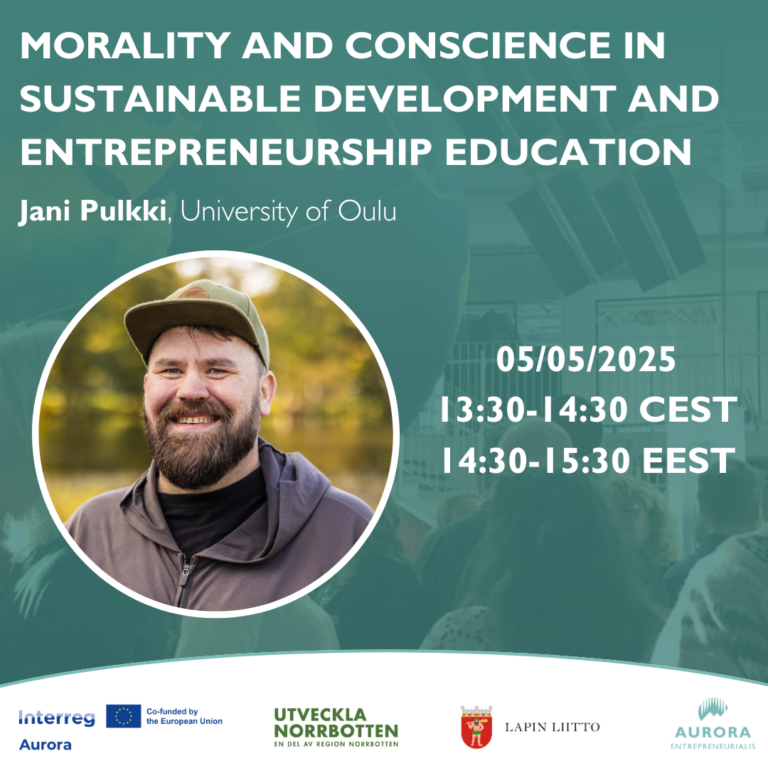The ongoing Interreg Aurora project Our Precious Transboundary Waters gave a report back from their field work in Pasvik.
We are documenting the state of the aquatic environment in the border area between Russia, Norway, and Finland at the time of the closure of the Nikel smelter. This serves as a reference point for future observations made years later, as changes and environmental recovery take place.
Since the 1930s, the nickel smelter in the Russian town of Nikel was a major source of sulfur dioxide and heavy metal pollution affecting the Pasvik watercourse and surrounding environment. Heavy metal emissions led to elevated levels of metals in soil, water, and in lake sediments — layers of particles and organic matter that accumulate on the lakebed over time. The smelter’s closure in December 2020 provides a unique opportunity to monitor the recovery of the aquatic environment.
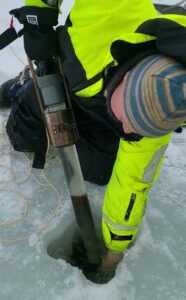
By comparing changes in heavy metal levels over time, we gain a clearer understanding of how—and how quickly—these levels decline once their source has been removed. The Pasvik catchment has long attracted interest from authorities and researchers, with decades of environmental data collection and improved cross-border cooperation since the early 1990s. In this phase of the project, we are collecting sediment cores.
By taking sediment cores from the bottom of lakes, we can study changes in heavy metal levels over time—even from before the smelter was built. As sediments build up in layers, the deeper they are, the older they get. Radiocarbon dating helps us determine their age more precisely.
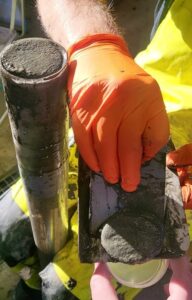
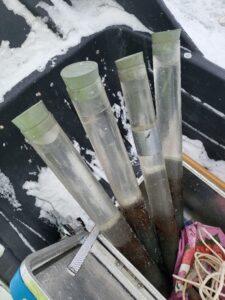
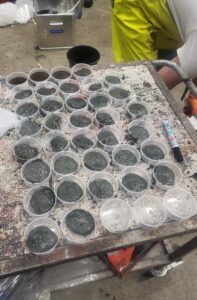
In March 2025, eight sediment cores were collected from two sites in the Pasvik watercourse: four from Skrukkebukta (downstream of Nikel) and four from Vaggatem (upstream). This allows a direct comparison of the long-term effects of smelting. The cores were then sliced into 0.5–1 cm layers, each representing a time period, and sent for lab analysis. By examining heavy metal levels in these layers, we aim to create a timeline showing how pollution developed over time in this transboundary area.
The project Our Precious Transboundary Waters has been appointed as an Operation of Strategic Importance by the Interreg Aurora Programme. This means a project which provides a significant contribution to the achievement of the objectives of the Interreg Aurora Programme.


